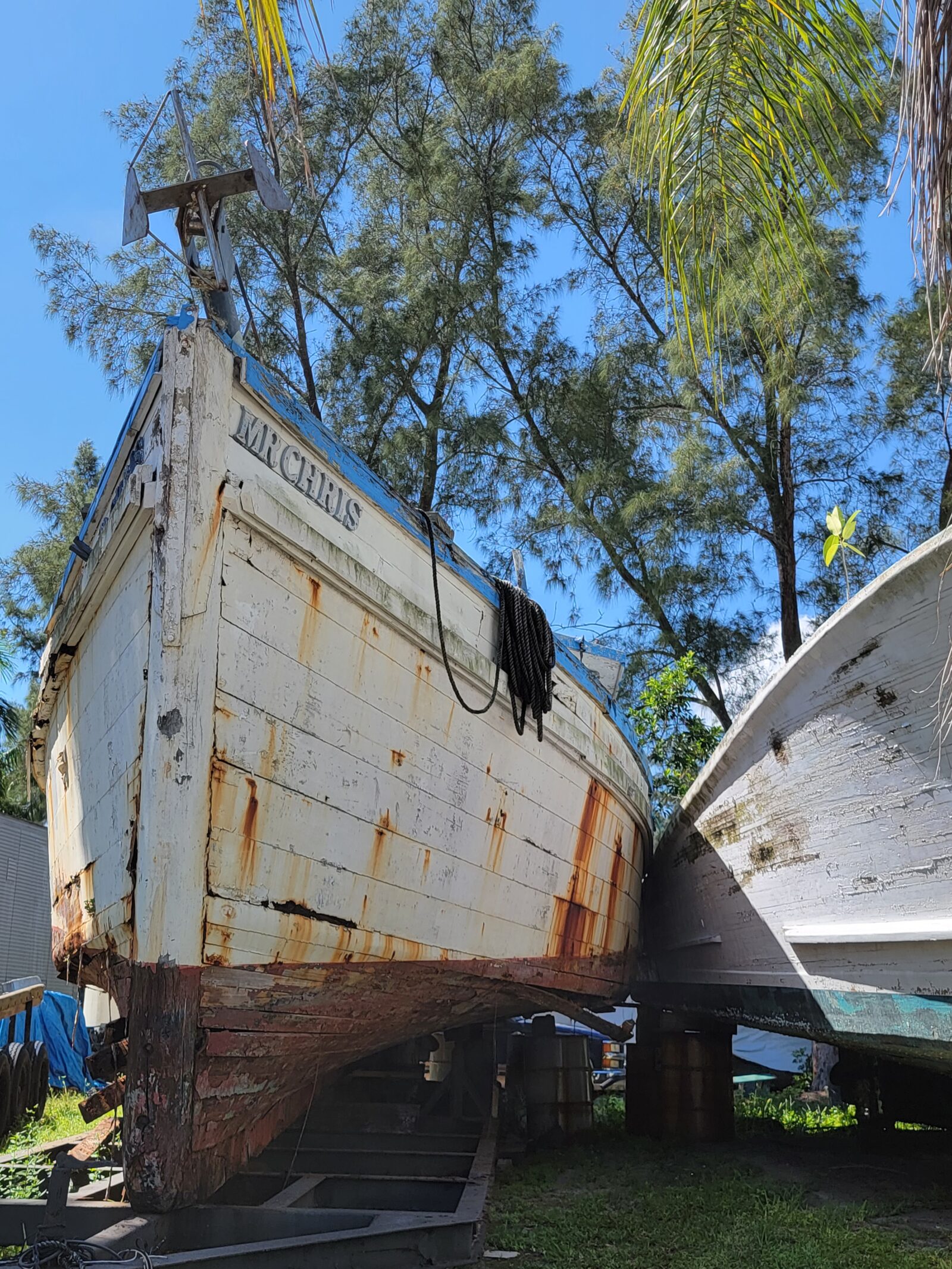DEEP HISTORY

of the Cortez Fishing Village
By Sarah Fish
Bradenton would not be the city it is today if not for the Gulf waters, estuaries and Manatee River. Surrounded by water, the area would be nothing without this vital resource. Nor without the industrious fishing community that made this coast their home and livelihood at the historic Cortez Fishing Village.
Cortez Village, originally called Hunter’s Point, was settled in 1880 by fishing families from North Carolina. It remains one of the few working fishing villages in Florida to this day. Many descendants of the original families still inhabit the community, which is also home to 97 structures listed on the National Register of Historic Places.
Honoring that past and our waters at the Village is The Florida Maritime Museum, whose mission is to collect, preserve and share traditional knowledge, cultural artifacts and personal stories specific to Florida’s fishing and maritime heritage.
History of the Cortez Fishing Village
“It’s almost like stepping back in time,” Karen Bell, Friends of the Florida Maritime Museum board member and owner of Starfish Co., says in a video interview. Bell is a lifelong resident and descendant of the original settlers to the location. She took over Cortez fishing company AP Bell from her elders, plus she sits on the board of Florida Institute for Saltwater Heritage, a non-profit organization.
Several homes have come and gone with time, many destroyed by weather catastrophes, notably, the hurricane of 1921, one of the largest storms to batter the coast of Florida. In its wake, the entire Cortez Village was flooded. The schoolhouse served as shelter for the community, at a time before the auditorium was even built.



The old schoolhouse wasn’t added until 1912. Over time, it grew to accommodate the developing community. The auditorium was added during the Great Depression and eventually became the community center in 1961. Once owned by renowned weaver Robert Sailors, it also was a studio and private residence of the artist. Manatee County bought it with funds from the Florida Community Trust after his death in 1995 and it now serves as the central hub of the Florida Maritime Museum.
However, the Bratton Store was the first commercial building erected at Hunter’s
Point. Built by William Bratton in the 1890s. It came to house the Village’s post office, general store and steamboat wharf. It served as the main point of contact with life outside of the community for those who lived and worked there.
In the early 1900s, rooms were added to accommodate travelers in what was named the Albion Inn, thriving successfully for years. The wooden cistern in the Village was built sometime in the 1940s to be used to collect rain as a source of freshwater. The entire community otherwise relied on only one hand-dug well.
Another structure in the Village is the Pillsbury Boat Shop, constructed in 1907. It was the first Snead Island Boatworks building and operated by Edward Pillsbury with his three sons. It was later sold to a member of the deeply rooted Bishop family of Bradenton and the entire building was relocated, like many other structures on site over time. The Boatworks building itself was relocated a total of four times between 1935 and 2007, when in that year it finally returned to its original home at Cortez, coming full circle a century later.

The Cortez Fishing Village Today
As the modern world encroached, the Village persevered but many buildings and family businesses closed or relocated. The Albion eventually closed in the 1970s and the building was sold to the Coast Guard who had it scheduled for demolition in 1991. Thanks to the Organized Fishermen of Florida and the Cortez Historical Society, the Bratton Building and its Inn were
saved. In 2006 it was moved to the current location at the Maritime Museum.
And the Bratton Building is once again a community space. Now, classes are taught there
by the Maritime Museum’s Folk School. This artistry program is committed to preserving the skills and handcrafts of the original fishing community.
“We want people to understand why we’re here,
what we’re doing,” Bell says.
Today, visitors to the Cortez Fishing Village enjoy its quaint atmosphere and historic charm on foot while patronizing the Village’s merchants. Huge, restored antique boats decorate the setting in a proud display of heritage. Many of the Village’s original homes can still be admired today—a glimpse into the “Old Florida” that elsewhere is slowly disappearing to development.
Restaurants right on the water feature local fish caught daily and space for live music. Charter
companies take adventure-seekers for deep sea fishing tours of the gulf waters and the Cortez
Commercial Fishing Festival, started in 1981, is tentatively planned for the third week of February 2022. For a closer look at the waters of Cortez Village, kayaks and jet ski rentals are available, too.
While current resident artisans sell their work, the Maritime Museum binds the ways of the past to the Village’s future. More than ever before, the Cortez Fishing Village is bustling with commerce and community.






